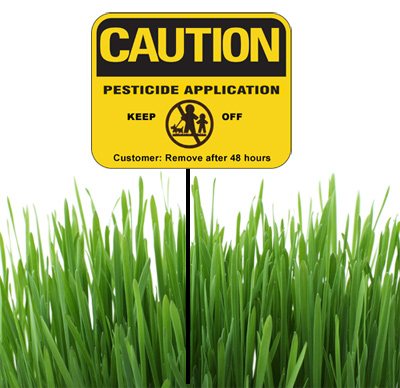Fertilizers and Pesticides
Fertilizers and Pesticides
Fertilizer nutrients and toxic chemicals from landscaping and lawn care is a major source of pollution for the inlets of the Chesapeake Bay. According to the Chesapeake Bay Foundation, some 300 million pounds of nitrogen pollution reaches the Bay each year, and much of this comes from the application of fertilizer on lawns and landscapes. These excess nutrients, nitrogen and phosphorus being the most common, can result in toxic algal blooms, fish kills, and even “dead zones” where all of the water’s dissolved oxygen is depleted.

Despite increased knowledge and awareness about the toxicity of pesticides, pesticide use in the U.S. has continued to increase. According to the Center for Biological Diversity, more than 18,000 pesticides are currently registered by the Environmental Protection Agency (EPA), and more than 2 billion pounds of pesticides are sold annually in the United States. The Maryland Pesticide Network has identified a growing body of evidence demonstrating strong linkages between pesticides and their toxicity to aquatic life, wildlife, and humans that co-inhabit the Chesapeake Bay ecosystem (MPN, 2009).


Crab Creek Conservancy encourages watershed residents to first use organic methods of landscaping and when not possible, greatly reduce the amount of pesticides used on their property. Below are a variety of resources available to help educate landowners in the watershed about managing their land without these harmful chemicals.
Resources
- University of Maryland Cooperative Extension Anne Arundel County Extension Office – 410-222-3900
- Organic gardening and additional resources from Beyond Pesticides.
- How to manage a chemical free lawn from National Wildlife Federation.
- Consider alternatives to lawns, such as creating a bird-friendly yard.

